
“Keep your back straight”, “Push with your heels”, “Keep your knees in line with your feet”, “Do not bend your elbows”. These are some examples of corrections our kinesiologists-trainers often repeat to their clients. As you know, the proper execution of any exercise has a direct impact on its effectiveness and on avoiding injuries. Do you think you are doing your exercises correctly? Have you noticed people who would benefit from the advice of kinesiologists? What are the common training mistakes?
Before judging the quality of movement execution, one must first ask why the exercise is executed in a specific manner? There might be valid reasons for this. For example, as a rule, we will focus on controlling the movement. However, in sports training, the technique or speed of execution might be modified to meet the specifics of the sport.
Nevertheless, are there any strength training or cardiovascular machines that are most often misused? I asked a few of our kinesiologists and there seems to be a consensus on the most common training mistakes when using specific machines. Here are some of their answers and, most importantly, their valuable advice to ensure proper execution and ultimately its effectiveness.
Leg Press or Lower Leg Extension
A very popular and excellent piece of equipment for working the leg muscles (quadriceps, hamstrings, and glutes). Although the equipment seems simple enough to use, mistakes can reduce the effectiveness of the exercise and cause injury. Here are the common mistakes observed by David Létourneau-Rioux, kinesiologist-trainer and manager at the Nautilus Plus branch in Laval.
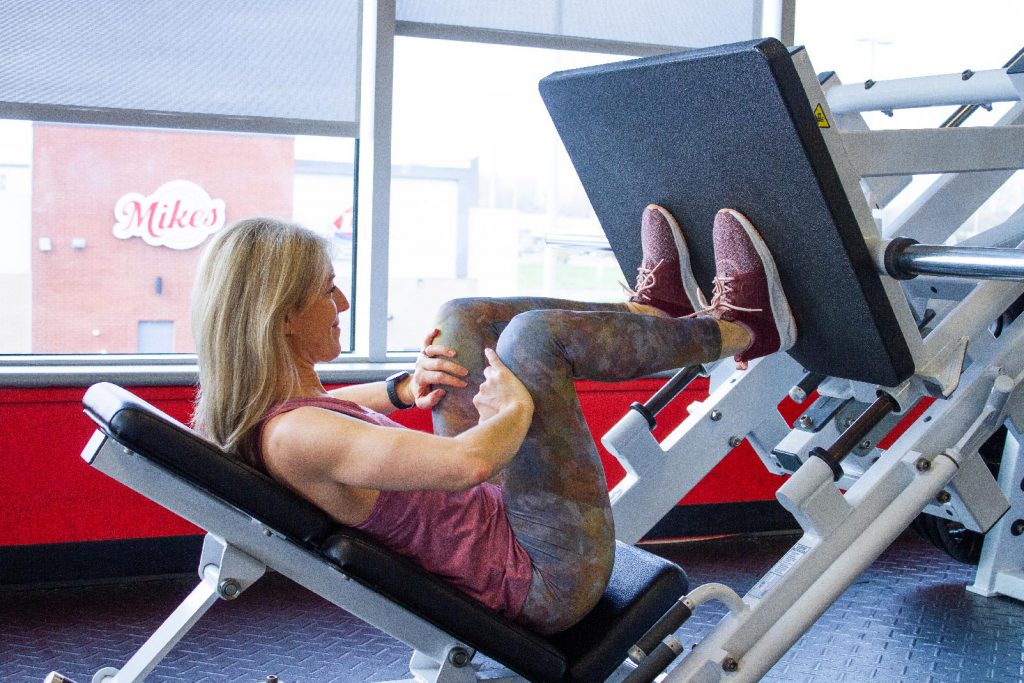
MISTAKES
- Not going low enough;
- Knees too close together or too wide apart;
- Pushing with the toes;
- Buttocks lifting off the machine;
- Hands on thighs.
PROPER EXECUTION:
- Back and head resting on the machine, with hands on the handles;
- Feet aligned with your hips with heels flat on the platform;
- Knees should remain in line with the feet during the movement;
- Lower the platform by bending the knees to a 90-degree angle;
- While pushing off with the heels, perform a full leg extension WITHOUT locking the knees and maintaining knee-foot alignment.
Lat Pull-Down
This exercise specifically works the back muscles, mainly the lats, but also the arm, shoulder, and core muscles. This exercise helps to improve posture and to facilitate “pulling” movements such as opening doors, swimming, starting a lawnmower, etc. It is also a good first step to doing pull-ups. According to Kyriakos Mammis, a kinesiologist and trainer at the Nautilus Plus branch in Rockland, some people even use it to reduce back pain, but there are some mistakes to be avoided.
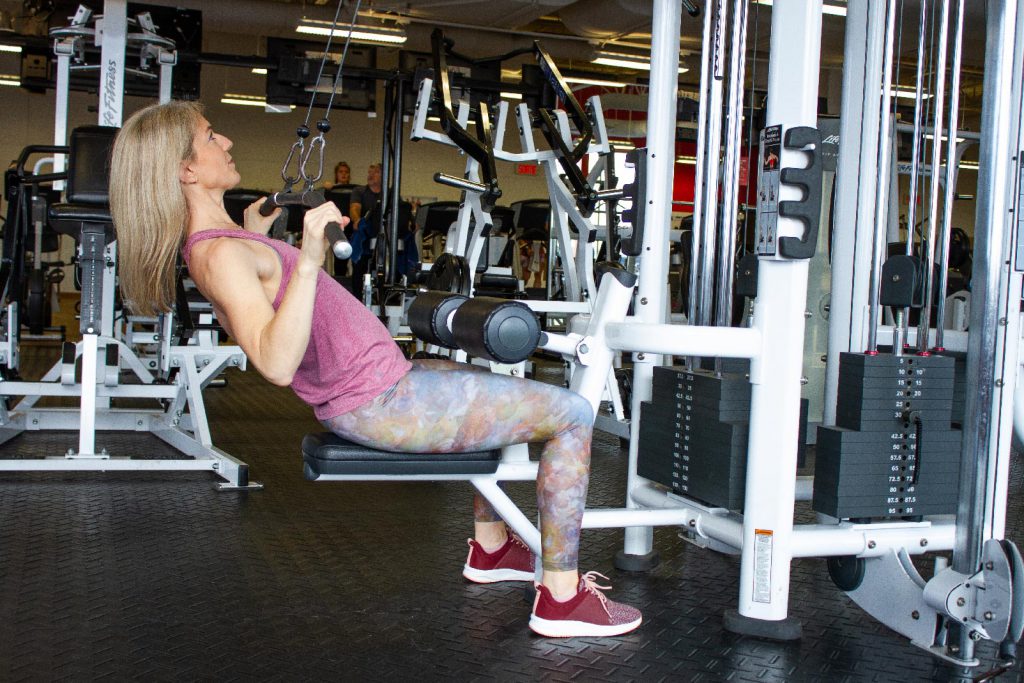
MISTAKES:
- The bar behind the neck;
- Tilting of the trunk either forward or backward during the pull;
- Internal rotation of the shoulders at the end of the movement.
PROPER EXECUTION:
- Adjust the height of the rollers so that they touch your thighs;
- Trunk slightly inclined backwards;
- Pull the bar in front of your body (bringing your shoulder blades together);
- Stop the bar at about chin level;
- Slowly return, with control, to the starting position without changing the position of upper body.
Reverse Fly on the Pec Dec
This machine allows you to work the pectoral muscles or the back depending on your position, either facing or back to the machine. The main advantage of this machine is that it increases stability during the movement, which allows good work for the muscles involved. When used to work the back (sitting facing the machine), Nicolas St-Onge, kinesiologist at Nautilus Plus in Terrebonne, observes a few important training mistakes. “First of all, you must avoid tilting shoulders frontwards. This can cause shoulder pain. Secondly, the elbows should not move. We want to isolate the movement at the shoulder. The goal is to contract the rhomboids while keeping the elbows steady.”
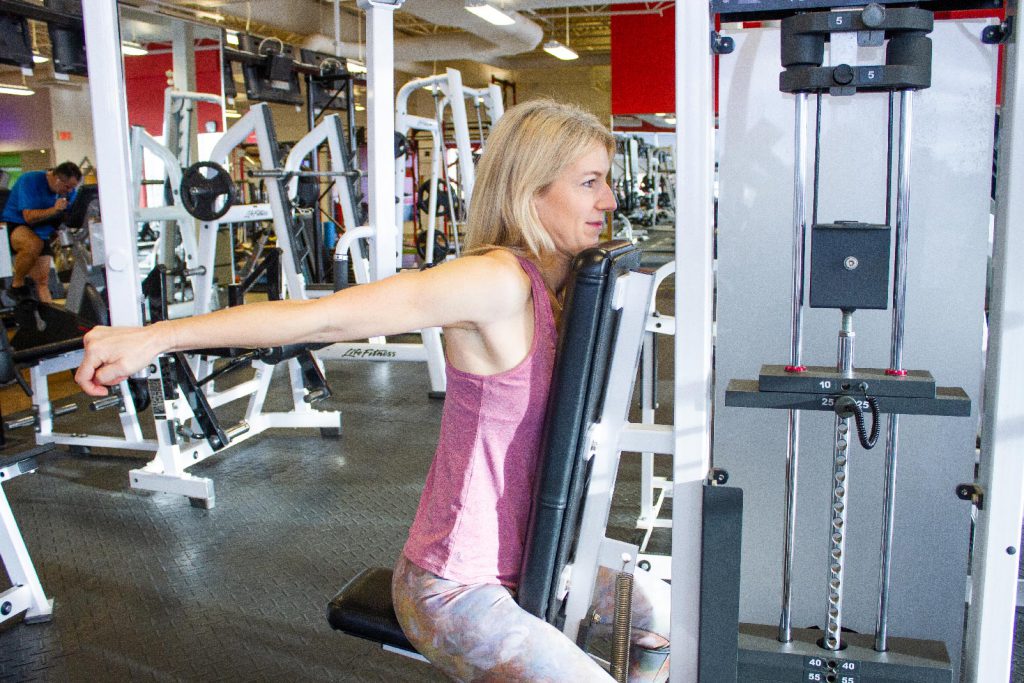
MISTAKES:
- Anterior shoulder tilt (going too far back with the arms);
- Elbow flexion;
- Shoulders lifted;
- Chest tilted forward and exaggerated lean on the cushion (often due to too heavy a load).
PROPER EXECUTION:
- Back straight, abs and chest pressed against the cushion with head aligned with the spine;
- Keep elbows in the same position throughout the movement (slightly bent);
- Bring the shoulder blades together at the end of the contraction;
- Slowly return to the starting position.
Squat
“Whether performed on a squat rack or with free weights, the squat movement is not so simple to perform,” says Maguy Abi Karam, kinesiologist and trainer at the Laval branch. If it is poorly executed over time, it can be the cause of major injury. Be aware of the mistakes mentioned and try to stand in front of a mirror to help you adjust your form. Again, your coach may guide you differently depending on your goals or limitations.
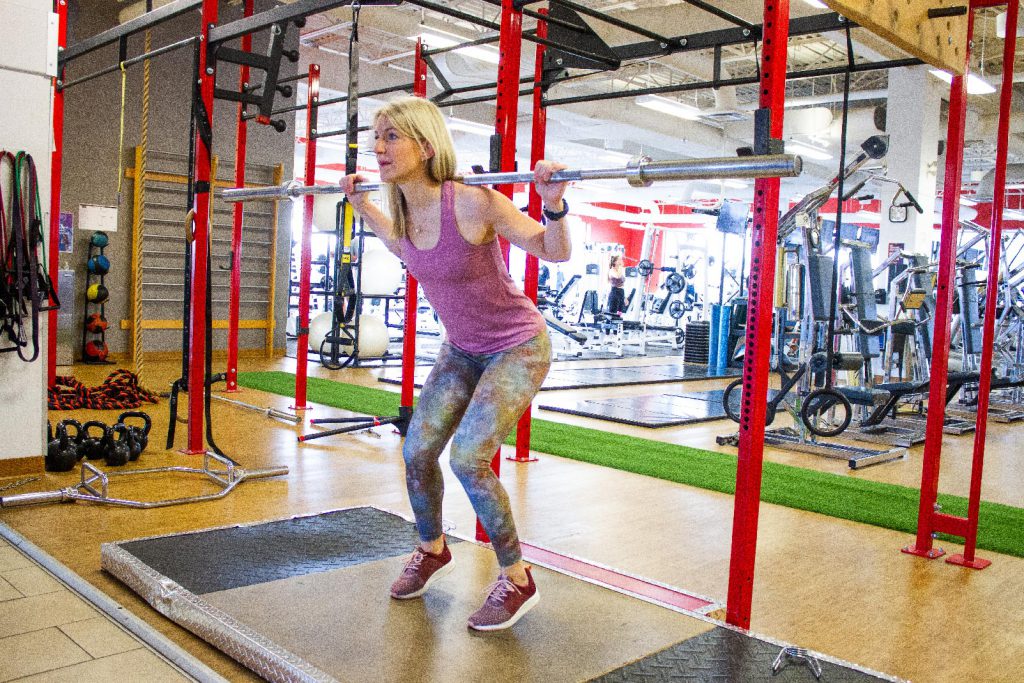
MISTAKES:
- Knees inwards;
- Lifting the heels off the ground;
- Rounded back and bent over;
- No bend at the hip.
PROPER EXECUTION:
- Combined hip, knee, and ankle flexion;
- Knees in line with the feet throughout the movement;
- Back straight and chest up;
- Heels down for the full duration of the movement.
StairMaster
“Although one might think that muscular equipment is most often problematic, some cardiovascular equipment is poorly used,” notes David Létourneau-Rioux. The vertical climber is one of them. Common mistakes on the climber render the exercise less effective, by limiting the involvement of the quadriceps and glutes. Here are the mistakes to avoid.
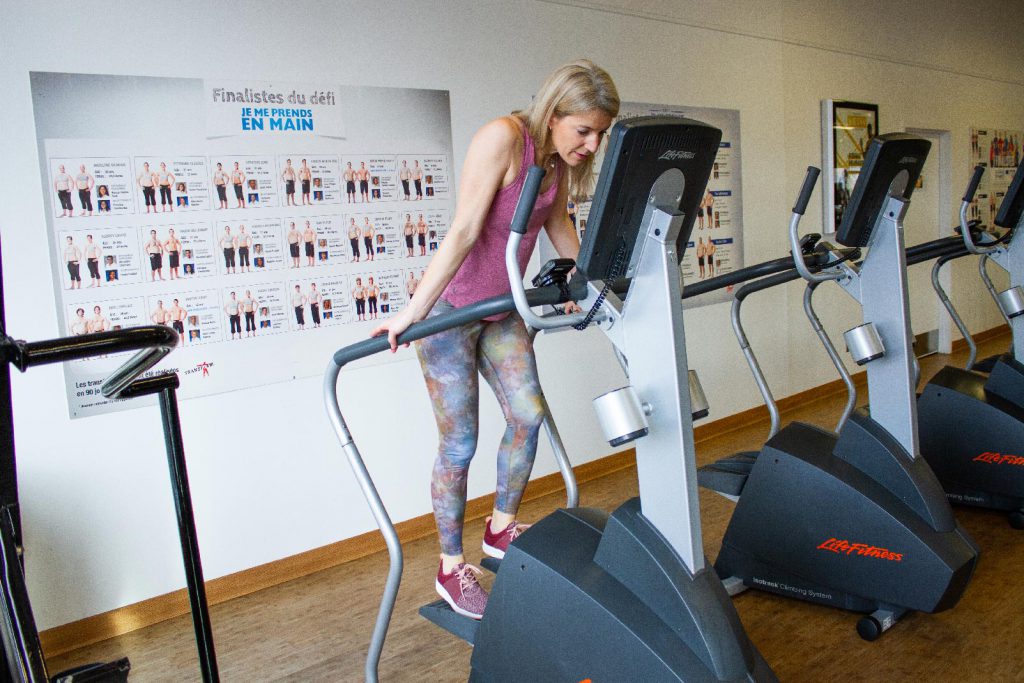
MISTAKES:
- Putting all your weight in your hands while leaning on the rails with your elbows locked;
- Putting all your weight in your hands while resting on the ramps with your elbows locked; buttocks out with your body leaning forward;
- Small range of motion (taking small steps on the toes).
PROPER EXECUTION:
- Hands lightly placed on the ramps or simply place fingertips on the ramps;
- Good posture with a straight back, engaged abs and extended spine;
- Take steps from the “actual” height of a step/staircase.
Unsure of how to perform some of the movements in your program? Call on a kinesiologist. Nautilus Plus offers 30-minute sessions that are perfect for this type of situation.
You can now surely avoid these type of training mistakes! Thanks to David Létourneau-Rioux, Kyriakos Mammis, Maguy Abi Karam and Nicolas St-Onge, four Nautilus Plus kinesiologists, for their collaboration.
Common training mistakes is a post from Nautilus Plus. The Nautilus Plus blog aims to help people in their journey to fitness through articles on training, nutrition, motivation, exercise and healthy recipes.
Copyright © Nautilus Plus 2022
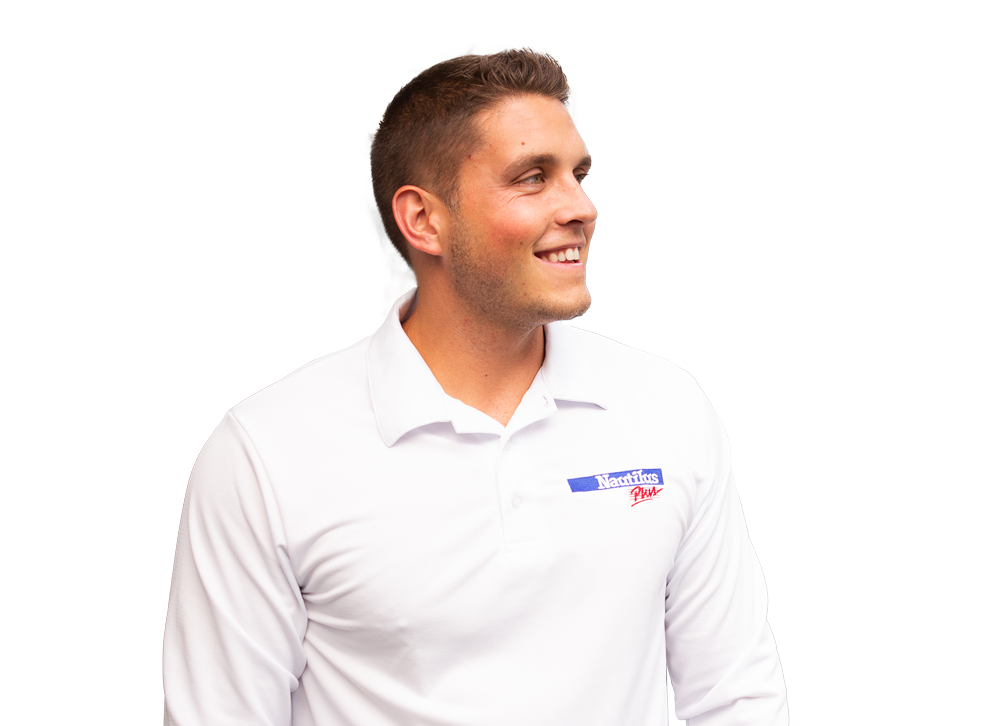
A session with a personal trainer will help you to progress!

Let's determine your fitness goals together and get some expert advice!
Make an appointment with a personal trainer
